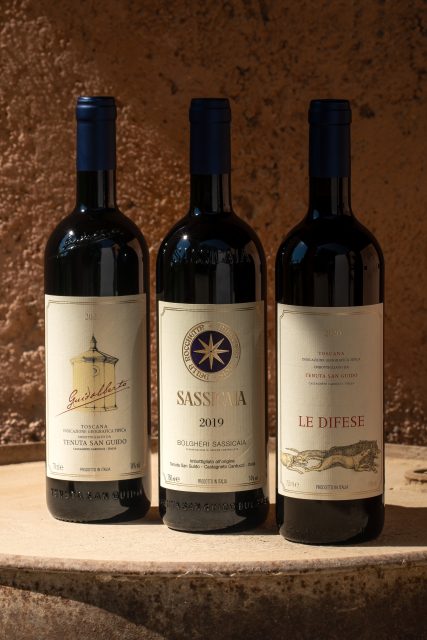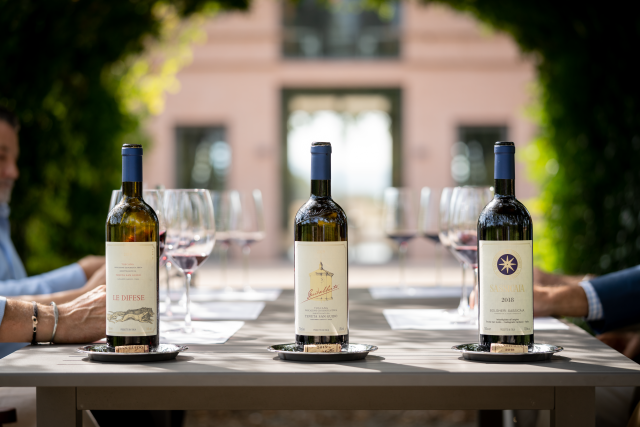This website uses cookies so that we can provide you with the best user experience possible. Cookie information is stored in your browser and performs functions such as recognising you when you return to our website and helping our team to understand which sections of the website you find most interesting and useful.
How is the newly-released Tenuta San Guido Sassicaia 2020 vintage shaping up?
Tenuta San Guido, responsible for launching the first Super Tuscan ever to come to market in the form of Sassicaia, revealed a first look at the 2020 vintage at a trade and press tasting yesterday.

Priscilla Incisa della Rocchetta, the third-generation face of the iconic Tuscan producer, was joined by Armit managing director Brett Fleming to present the wines.
Along with a selection of Sassicaia vintages from 2000, 2010 and 2014, the 2020 release — yet to come to market — was shown alongside the 2021 vintage of Tenuta San Guido‘s Le Difese label.
“It’s a great honour and privilege — and I don’t use those words lightly — to be able to share the spoils of one of the great producers of Italy,” Fleming said.
The wine began its life in the early 1940s with Mario Incisa, Grandfather to Priscilla. “Sassicaia wasn’t started as a commercial wine or commercial project,” she said. “He wanted to experiment with international grape varieties in Bolgheri, even during the war, in order to produce something that would be consumed among family and friends.”
Evenso, it was here in 1972 that the first officially bottle of Sassicaia from Tenuta San Guido was released onto the market (from the 1968 vintage) forever changing the Italian wine scene — and so the Super Tuscan was born.
Sassicaia remained the sole label produced by Tenuta San Guido until 2000, when Guidalberto was introduced; a “slightly different blend of Cabernet Sauvignon and Merlot”, Incisa della Rocchetta said. The latest vintage of Guidalberto is set to be shown to trade and press next month at a separate event.
In 2002, a third label in the form of Le Difese was added to the range. This Cabernet Sauvignon and Sangiovese blend has taken on a slightly different identity in its 2021 form, with Sangiovese dominating for the first time.

“Traditionally, Le Difese had a higher percentage of Cabernet Sauvignon, but since last year we have switched the percentages a little bit,” Incisa della Rocchetta explained. In fact, the blend has been changed from a 70:30 split dominated by Cabernet Sauvignon to 55% Sangiovese and 45% Cabernet for the 2021 release.
This seems a substantial change for a winery rooted in international varieties. And indeed Incisa della Rocchetta explained that the reason behind the change was to add more of a “local Tuscan touch” to the wine, making it “a wine which is very easy to drink easily approachable, supposed to be drunk young and fresh”.
Le Difese is seen by its makers as a “first step into the Tenuta San Guido world”, she added, and its place on on-trade wine lists here in the UK reinforces this.
Fleming explained: “The reality is wines get consumed very very young by most consumers. Le Difese is a wine from the San Guido Estate which allows us to go to restaurants and have it by the glass.”
“Restaurants use it very successfully for by the glass,” Fleming said. “It’s more approachable because of the Sangiovese, whereas the Sassicaia and Guidalberto being Cabernet based need a lot more time. Eventhough Sassicaia is recognised as being more approachable in its youth, he wines still need 20 years to really show their DNA.”

Le Difese also allows the estate to access consumers at a more affordable price point.
“Not everyone can afford to buy Sassicaia and certainly not everyone can even get it because it’s on allocation, so Le Difese is a bridge for that as well,” Fleming added.
Tenuta San Guido may have shifted its blend for the Le Difese wine, but the same can not be said for its first label. Under its own DOC — Sassicaia Bolgheri DOC — the wines must contain a minimum of 80% Cabernet Sauvignon.
Sassicaia’s blend remains the same from year to year, with 85% Cabernet Sauvignon and 15% Cabernet Franc, which allows for a clear expression of each vintage.
“It’s worth noting that it’s not like that’s a bad mistake,” Fleming said. “Sassicaia has built a reputation for what it is and its structure, its DNA, within those boundaries.”
Looking ahead, Incisa della Rocchetta, without wanting to give too many “spoilers”, said that the Sassicaia 2021 vintage is looking “pretty awesome”, with high hopes for the vintage.
Related news
Bourgogne wine see global growth despite difficult market conditions

